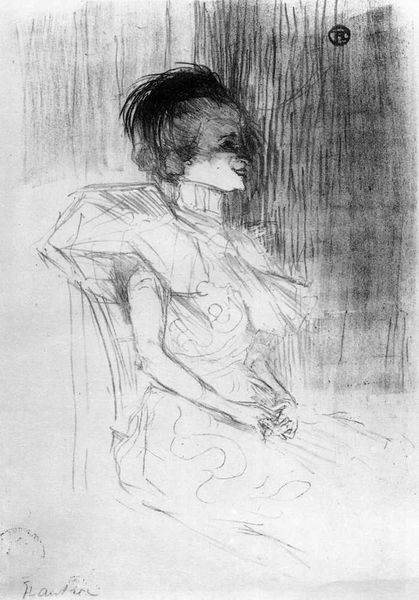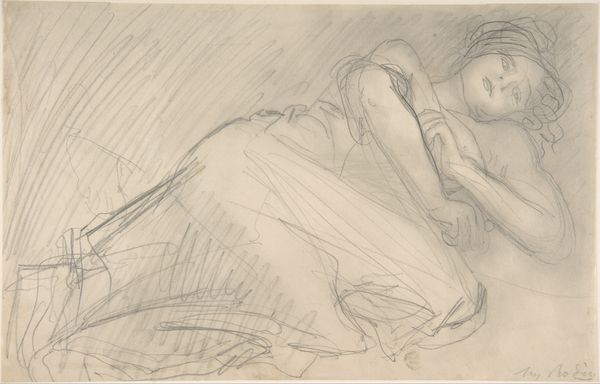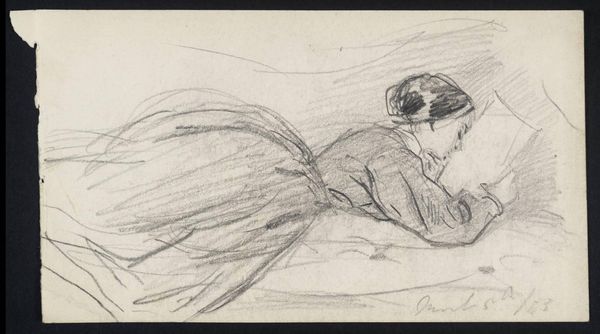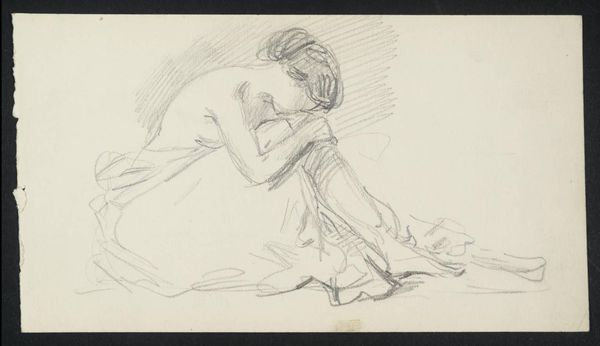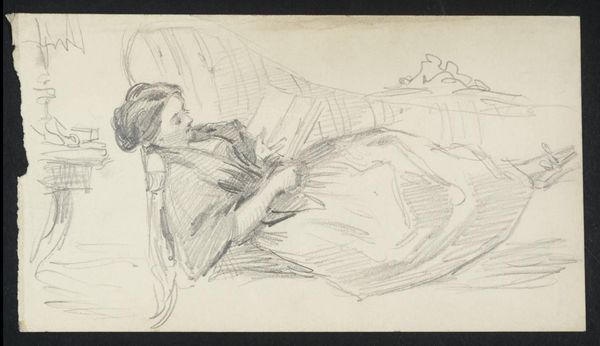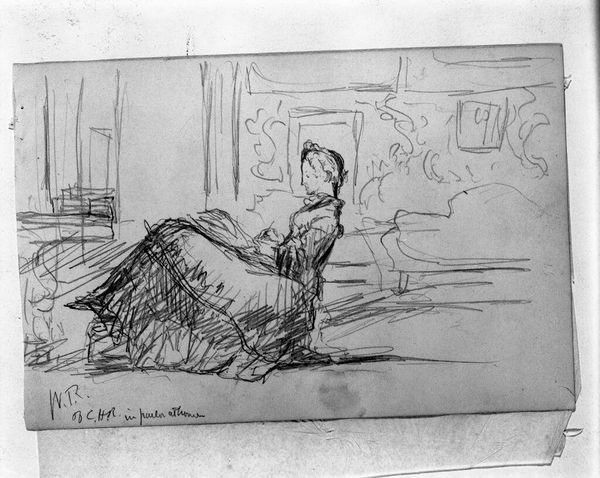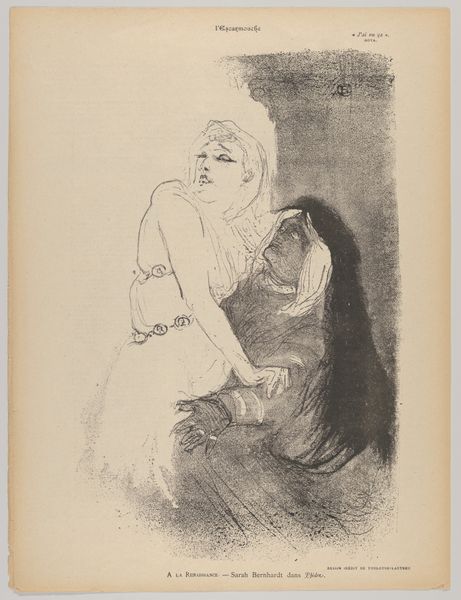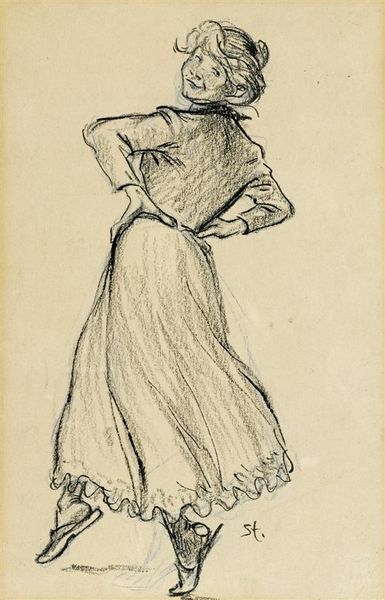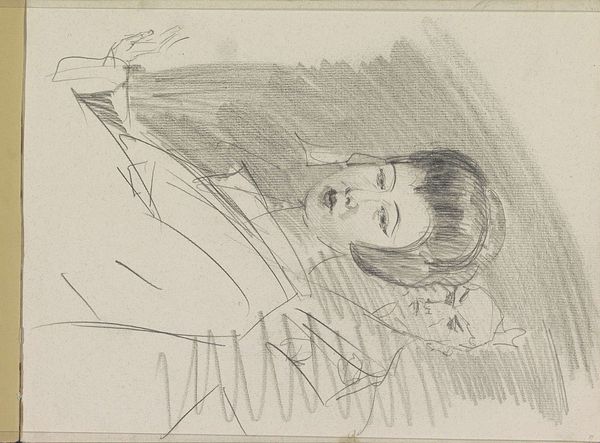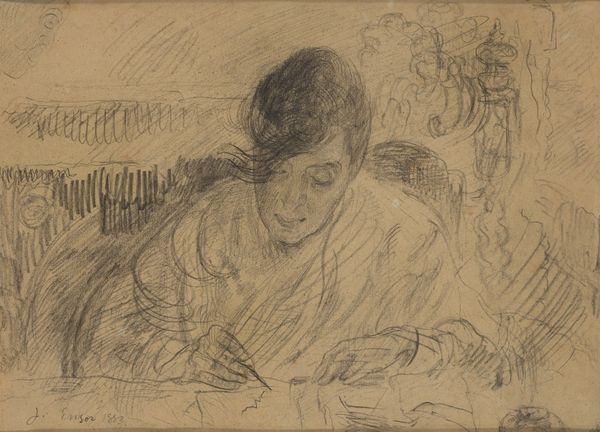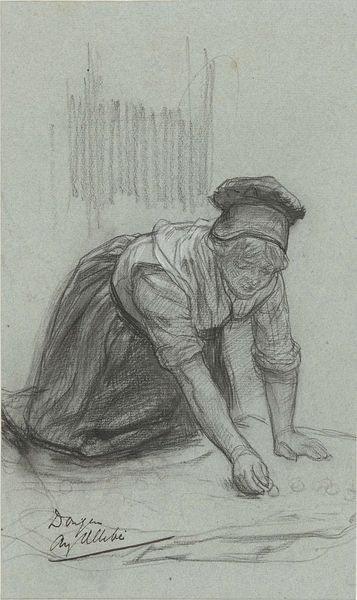
drawing, pencil
#
portrait
#
drawing
#
impressionism
#
figuration
#
pencil
#
academic-art
#
nude
#
realism
Dimensions: 8.5 x 13 cm
Copyright: Public domain
Editor: This is Silvestro Lega's "Figure of a Woman," a pencil drawing of unknown date, currently held in a private collection. It has a certain softness about it despite being rendered with quite a bit of dark shading... What stands out to you in this piece? Curator: The medium itself, pencil, immediately draws my attention. Pencil, graphite, a material sourced directly from the earth, ground and manipulated. The pressure applied, the way it’s layered, this speaks to labor. Note the subtle grid underneath...it signals a process, perhaps a preparatory sketch for a larger work, and highlights the act of creation. How might the ready availability of pencil as a material have affected artistic practices at the time? Editor: So you see it less as a finished piece and more as evidence of the artist’s working process? Curator: Precisely. And think about the social context: Lega was involved with the Macchiaioli group, interested in depicting everyday life and the effects of light. Was this made for public consumption, or a private study of the human form? Also consider the status of drawing versus painting at the time – was drawing considered a 'lesser' art form because it utilized seemingly humble materials? Editor: I hadn’t considered that angle. It's fascinating to think about the pencil itself being a statement of sorts, challenging those established hierarchies! Curator: It allows for broader experimentation. Where oil paint demanded specific craft traditions, pencil can be worked by anyone literate in writing, thus the consumption of "fine art" can become participatory for all classes, in theory democratizing art production, if not art ownership, directly engaging the art with new and expanded material networks. How else could such new materiality engage with craft traditions? Editor: I see now, you’ve given me a whole new perspective. Thank you. Curator: Indeed! By looking at art this way, it urges one to challenge pre-established aesthetic hierarchies and democratize both our access to the work, as well as its production.
Comments
No comments
Be the first to comment and join the conversation on the ultimate creative platform.

